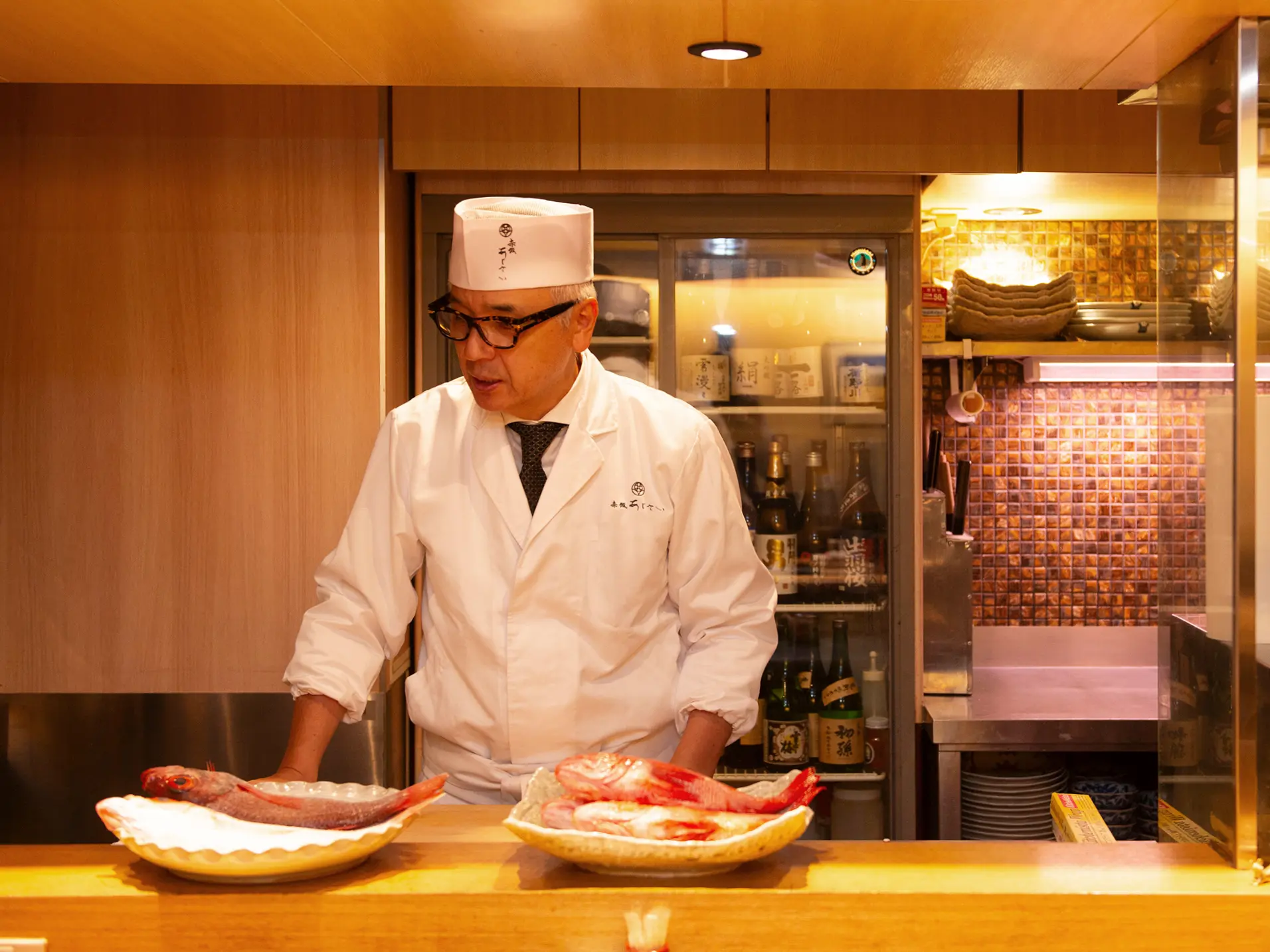
Message from the Chef
- Home
- Message from the Chef
Dedicated to
Yamagata ingredients and flavors.
That is the identity of
‘Akasaka Ajisai’,
as taught to us by our customers.
Koji Sato began his apprenticeship as a chef at the age of 18. The inspiration behind this decision was the popular television drama “Dear Mother” (aired on NTV at the time). After 17 years, the young man who admired the reserved chefs opened a traditional Japanese restaurant in Akasaka, where he emphasized the ingredients and flavors of his hometown.

Head Chef of Yamagata Kappo Akasaka Ajisai, was born in 1960 in Oishida Town, Yamagata Prefecture. The second son of a fishmonger, he moved to Tokyo after graduating from Nihon University Yamagata High School. After honing his skills in famous culinary establishments in Akasaka and Tsukiji, at the age of 34, he opened ‘Yamagata Kappo Akasaka Ajisai’ in Akasaka, a restaurant devoted to Yamagata ingredients and flavors. Gaining recognition as a favorite among discerning diners, he also expanded his business to include the sale of nostalgic yet refined osechi and hot pot dishes, as well as offering products for ‘Furusato Tax’ and local specialty items.
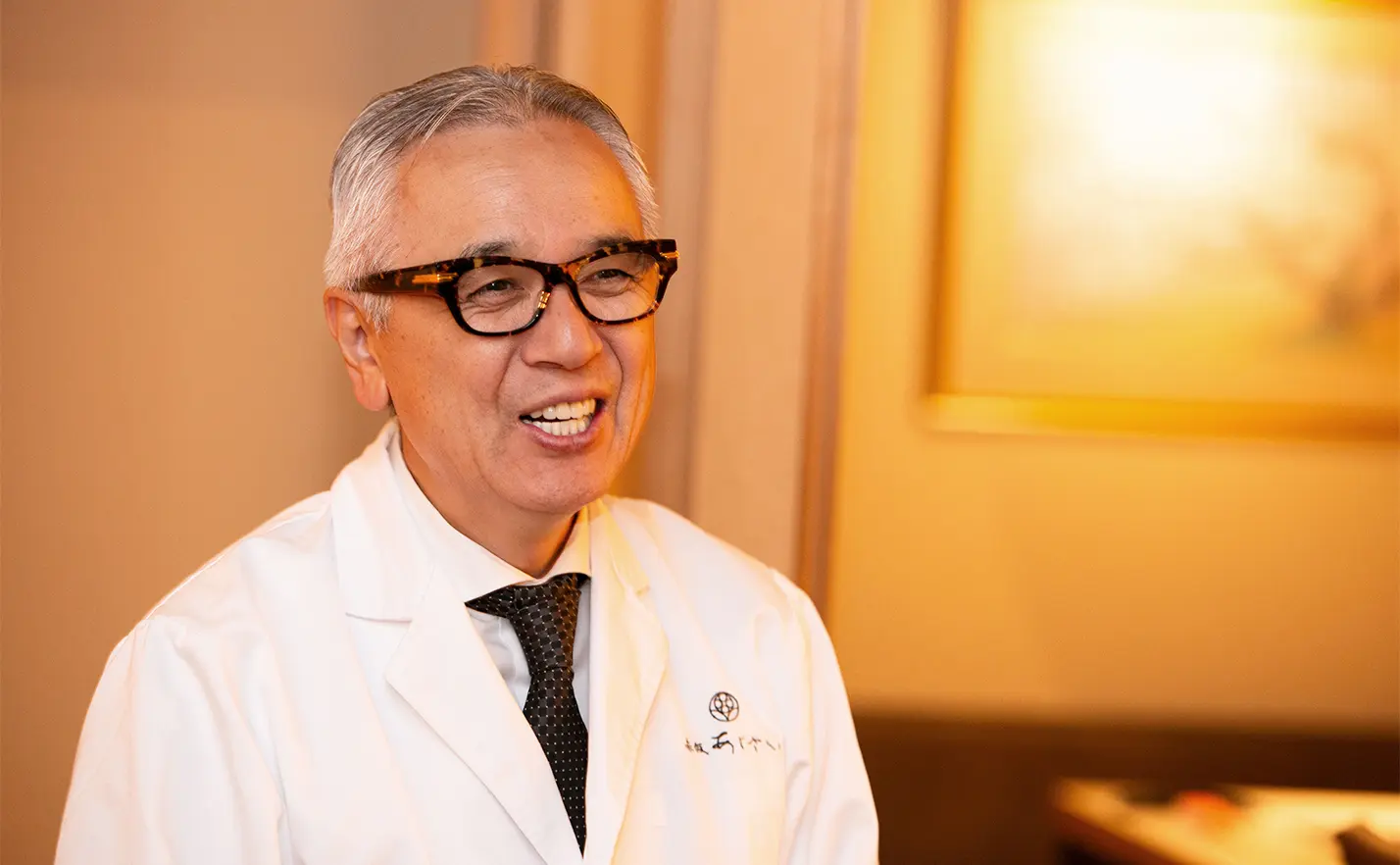
“If you’re going to train, do it in Tokyo.”
Relying on connections
to enter the world of fine dining.
I am the second son of a fishmonger from Oishida Town in Yamagata Prefecture. Influenced by my upbringing, by the time I graduated high school, I naturally decided to become a sushi chef. At that time, the popular TV drama ‘Dear Mother’ starring Kenichi Hagiwara, who played a sushi chef, was airing. I had been watching it since middle school and was inspired by the shy main character.
I thought to myself, ‘If I’m going to train, it has to be in Tokyo,’ but it was a time when you couldn’t get into a famous restaurant without an introduction. So, I was introduced by a friend of the same age who worked at Sushi Kappo Akasaka Hosumi in Akasaka. He had started working there immediately after graduating from junior high.
In addition to its glamorous Akasaka location, Sushi Kappo Akasaka Hosumi also had a branch in the National Diet Building’s cafeteria. Initially, my job was to load sushi rice and toppings into the shop’s light truck and deliver them. I was well-liked by a fishmonger from Tsukiji Fish Market, one of the restaurant’s suppliers, and when invited to his home, I met my future wife.
After about six years at Akasaka Hosumi, I moved to Tsukiji Ryotei Kawasho Soen through my father-in-law’s introduction. This kaiseki restaurant specialized in fugu (blowfish) dishes in winter and was a high-class establishment with an average customer spending of 30,000 to 40,000 yen. It was a great learning experience serving VIP customers and using only the finest ingredients.
The training of a sushi chef involves various stages: 1. preparation, 2. appetizers, 3. grilling, 4. frying, 5. sushi making, and 6. simmering. There were about 20 chefs at Tsukiji Ryotei Kawasho Soen, where I learned the basics of being a chef.
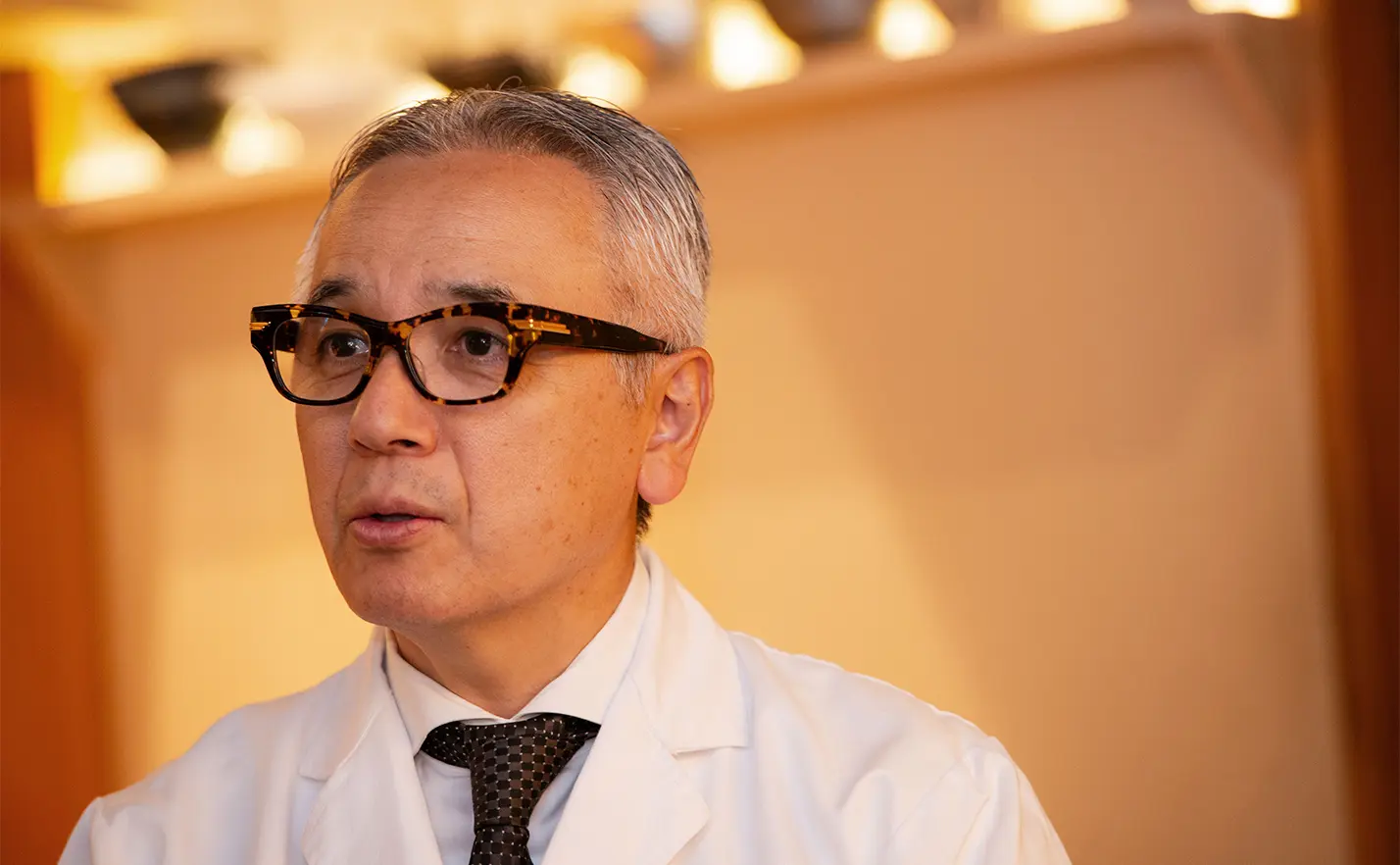
Seeing everyone come together
and support each other,
just like the large blooms of a hydrangea.
I had always wanted to own my restaurant, but I only started to seriously consider it around the age of 32 after getting married. In 1995, at the age of 34, I became independent and opened Akasaka Ajisai. You might wonder why it’s named ‘Ajisai’ (hydrangea). During my training days, I had bought and cared for an ornamental hydrangea, whose blue and purple hues sparkled beautifully, leaving a lasting impression. I decided then that if I ever opened my own place, it would be named ‘Ajisai.’ Despite being large blooms, hydrangeas do not scatter even when they wither. To me, it symbolizes how everyone’s efforts support and sustain the restaurant. I still have hydrangeas planted in my home garden.
The first Akasaka Ajisai was a small space of 16 tsubo (about 53 square meters), with 20 seats. It was after the bubble economy had burst, so managing the business was tough to the point where I could hardly pay my three part-time workers. Interestingly, that year was quite tumultuous, with the Great Hanshin Earthquake in January and the Tokyo subway sarin attack in March.
However, about a year and a half later, it became very busy. People from Yamagata Prefecture proudly brought their acquaintances, and the number of repeat customers grew. So, I searched for a larger space and moved to our current location. Meeting customers every day was a joy. I feel it’s thanks to the customers that we are where we are today.
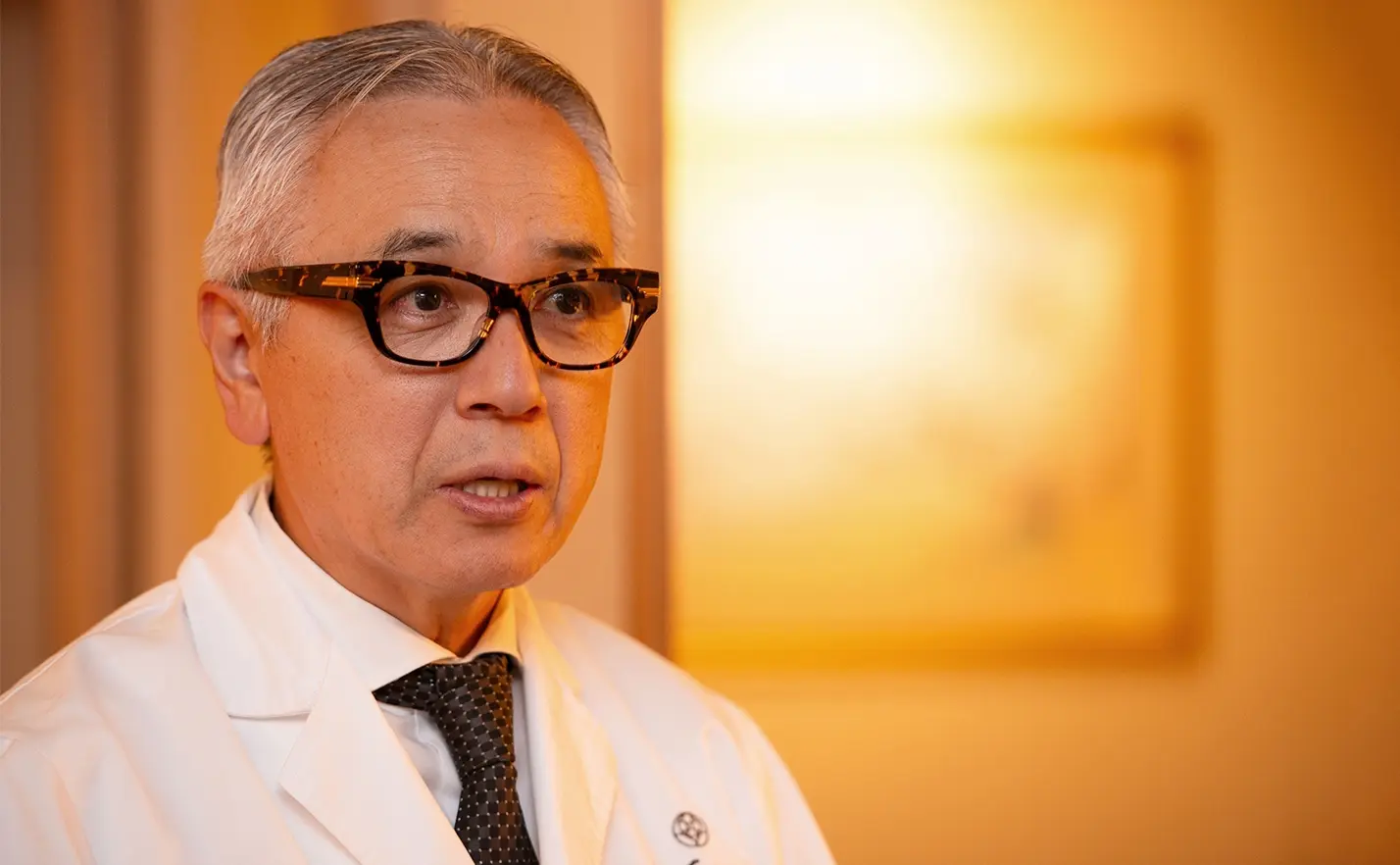
We spare no expense in our ingredients
to provide memorable dishes.
Our restaurant, true to its name as a Yamagata-style kappo, offers variations on traditional Yamagata local cuisine. Are you familiar with Yamagata’s famous ‘Imo-ni’ (potato stew)? Its deliciousness comes from the variety of seasonal ingredients it contains, creating a rich umami flavor. Therefore, we use plenty of ingredients generously, finishing the dish with Yamagata soy sauce. We also frequently use Yamagata soy sauce, miso, salt koji, and sake lees in our other dishes.
Another aspect I focus on is the impact of our dishes. In typical kaiseki cuisine, simmered dishes are beautifully presented in small dishes. Having trained in Kansai-style kappo, I initially served dishes in that manner. However, this approach lacked distinctiveness. Our customers suggested focusing on Yamagata cuisine with impactful presentation, as it makes a lasting impression.
At Akasaka Ajisai, we also serve Osechi cuisine. About three years after we opened, a visit from the former president of Isetan led to our products being featured in their stores. This event marked the start of our journey with Osechi cuisine, a tradition we’ve been proud to continue for the past 25 years. Initially, we offered only 20 sets, but as I started marketing myself, we expanded to selling at all department stores and post offices in Tokyo. Now, it’s also a return gift for hometown tax donations in Oishida Town, my hometown.
Osechi cuisine comprises 40 to 50 types of dishes, all carefully measured to fit the dimensions of the jubako (tiered boxes). It’s a true testament to a chef’s skill. We always include Yamagata ingredients.
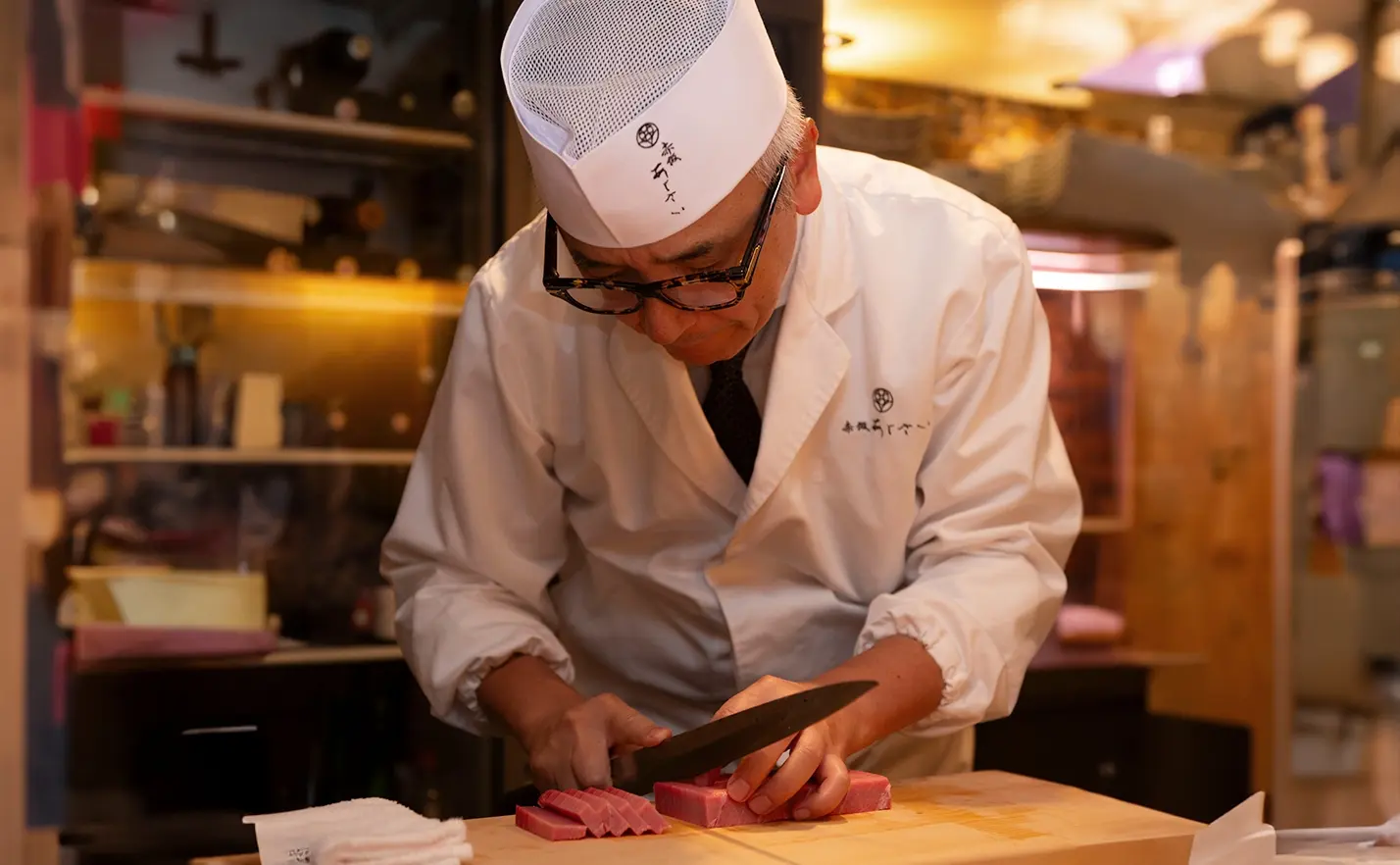
Daytime customers often lead
to nighttime patronage.
Gratitude to customers is more important
than profit.
Our evening menu features various fishes such as local mountain vegetables, Yamagata beef, rock oysters nurtured by the subterranean waters of Mount Chokai, blackthroat seaperch, and cold-season cod. Our lunch menu is also well-received, especially our fish set meals. For example, our mackerel is marinated in Yamagata sake lees. We offer two types of salmon, salt-grilled and teriyaki, both grilled over charcoal for enhanced umami. The soy sauce used is also from Yamagata, known for its deep flavor.
As mentioned earlier about the impact, our set meals include a fish fillet weighing 170 grams, which is larger than the usual 120 grams. The special large horse mackerel fry is available only on Thursdays and Fridays. Our famous mackerel miso set meal is known for its volume and tender, delicious meat, and has even been featured in newspapers. Larger fish tend to be fattier and more flavorful.
Each set meal comes with rice, miso soup, two small side dishes, and a salad. Of course, the rice and miso are from Yamagata. We keep our prices affordable, so the profit is modest, but customers who come for lunch often return for dinner. Some even make reservations before leaving.
Above all, customer referrals are our greatest honor and joy. I would like to take this opportunity to express my deep gratitude to our customers. With a spirit of ‘once in a lifetime’, we look forward to welcoming you wholeheartedly.